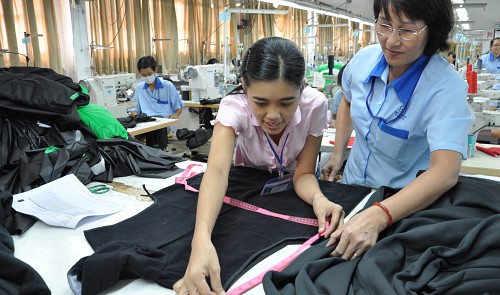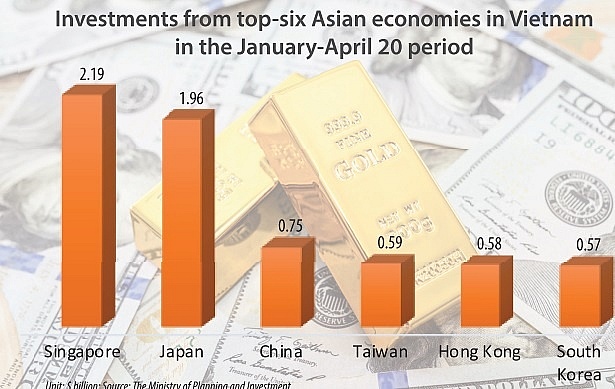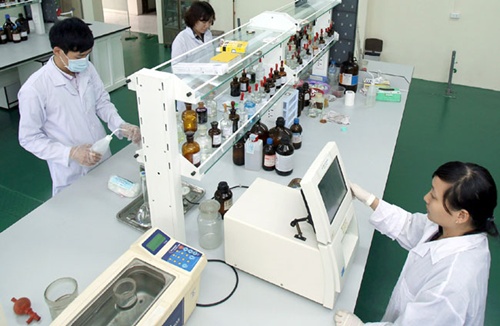Vietnamese enterprises to reap huge benefits after signing of EU trade pact
Vietnamese enterprises to reap huge benefits after signing of EU trade pact
The Vietnam-EU free trade agreement, which will be reached soon following the conclusion of final negotiations between the two parties, will bring benefits worth billions of U.S. dollars to Vietnamese firms, a senior state official told Tuoi Tre (Youth) newspaper in an interviewed published Tuesday.

The deal will open the door wide for more Vietnamese goods, like textiles, fisheries and furniture, to enter the 500-million-strong EU market when the import tax rates levied on them fall toward zero percent, said Luong Hoang Thai, director of the Department for Multilateral Trade Policy under the Ministry of Trade and Industry.
The EU will cut the import tariffs imposed on all of those products, which Vietnam has comparative advantages in making, to zero percent during a maximum time frame of seven years, Thai said, adding that this is a result which no other trade partner of the bloc has ever achieved.
On August 4, Vietnam and the EU reached an agreement in principle for a free trade deal after concluding many sessions of negotiations from June 2012 to August 2015 with a view to ensuring an effective environment for trade and investment relations.
The in-principle agreement includes the elimination of nearly all tariffs, at over 99 percent, for the two sides, in which Vietnam will liberalize tariffs over a 10-year period and the EU will do so over a 7-year period.
The agreement also covers non-tariff barriers to trade and other trade-related aspects such as public procurement, regulatory issues, competition, services, investment, intellectual property rights and sustainable development.
Vietnamese firms will gain benefits worth billions of U.S. dollars after the free trade pact is signed, director Thai said.
Roadmap of seven years
Some types of Vietnamese shipments, including vegetables, processed fruit and fruit juice, handbags, suitcases, plastics, ceramic and glass products will immediately be exempted from import taxes when the agreement takes effect.
Particularly, with certain kinds of Vietnamese goods, the EU will cut tariffs from the benchmark rates of its Generalized System of Preferences, not from the higher rates of the Most Favored Nation currently applied to all other countries, Thai said.
Some categories of Vietnamese goods exported to the bloc in relatively large volumes, such as textiles and footwear, will have a tariff reduction schedule of up to seven years, while many tariff lines will be lowered to zero as soon as the pact becomes effective.
However, the rule of origin for such products when exporting to the EU is also tight, he said.
For garment and textile products, the rule applies to two stages, including that the fabric must be made in Vietnam and the sewing process must take place inside the Southeast Asian country.
This is easier to meet than the “yarn forward rule of origin” that the U.S. requests in all negotiations with Vietnam for the TPP, Thai added.
The “yarn forward rule of origin” means that all items in a garment from the yarn stage onward must be made in one of the countries that is party to the TPP agreement.
The TPP is a proposed regional free trade agreement aimed at eliminating tariffs and lowering non-tariff barriers that is being negotiated by 12 countries throughout Asia-Pacific, including Australia, Brunei, Canada, Chile, Japan, Malaysia, Mexico, New Zealand, Peru, Singapore, the U.S. and Vietnam.
Currently the textile and dyeing sector in Vietnam is still undeveloped, so the country has to import a lot of materials, especially from other nations in the region.
So to develop the industry, Vietnam needs to have a large market , as many foreign businesses will channel their investment into the Southeast Asian country.
In addition, with a commitment to open markets for investment facilitation, Vietnam has the opportunity to become a regional hub connecting commercial and investment activities of European firms, Thai predicted.
Regarding agriculture, the EU has consented to grant Vietnam a quota equivalent to about 80,000 metric tons per year at a tax rate of zero percent as soon as the agreement takes effect, more than triple the current level of 25,000 metric tons per annum.
Particularly, there are no quotas for broken rice, and the tax will be zero percent.
With this commitment, particularly in terms of rice, except broken rice, the tax reductions will help Vietnamese businesses save nearly 17 million euros (US$20 million) a year.
For other items, like cassava, the EU’s quota for Vietnam will be 25,000 metric tons per year, whereas now they import about 33,000 metric tons worldwide annually.
As regards seafood, many items, such as tropical fish, will see the import duty reduced to zero percent as soon as the agreement takes effect. For other items it will take longer, a maximum of three years, for the tax rates to be dropped to zero.
Only the quota on canned tuna is much tighter, as this is a particularly sensitive product in the mindset of the EU.
However, the grouping’s quota is still higher than the rate Vietnamese firms are currently exporting their products to the market.
Win-win solutions
The economies of Vietnam and the EU are complementary to each other, with only a few items remaining in direct competition.
A number of southern European countries still produce textiles and footwear and Italy and Spain currently grow rice, so both parties must attempt to resolve all the differences when negotiating.
For Vietnam, the garment and textile sector is important, so Vietnam has worked to promote high levels of liberalization, including the zero percent tax rate as soon as the pact kicks in.
Commenting on the fact that the taxes on beef, milk and pork imports from the EU will be at zero percent in three to seven years, which will hammer the Vietnamese livestock industry, Thai said that as Vietnam is committed to opening the market for beef following the free trade agreement with Australia - New Zealand, the Southeast Asian country will apply the same policy to European products.
As to pork, the time frame for the European meat is a roadmap lasting seven to nine years. For chicken, it will take 10 years, the longest time for a European product to be fully exempted from tax when entering Vietnam.
Meanwhile, in seven years the EU has to basically drop all taxes for Vietnamese goods.
Some have voiced concerns that Vietnam is on the weak side when opening the market for high-value EU products like cars, motorcycles and pharmaceuticals in exchange for much lower value-added Vietnamese products.
But Thai rejected these opinions.
Presently Vietnam is shipping to the EU about $27 billion worth of goods, most of which are products from agriculture, forestry, fisheries, furniture and garment-textile.
Over 40 percent of the export turnover of Vietnam to the EU enjoys a zero percent tax rate. So when the free trade pact kicks in, the rate will rise to 100 percent in a maximum of seven years.
Currently, the average import duty for Vietnamese shipments to the EU is 6.5 percent, so with $27 billion in total exports to in 2014, Vietnamese firms can save over $1 billion in tax exemption when the pact is reached, Thai said.
Coming along with the tax cut is the rising competitiveness of Vietnamese goods and the probability of expanding in the EU market, thus resulting in the development of domestic production, he added.



















